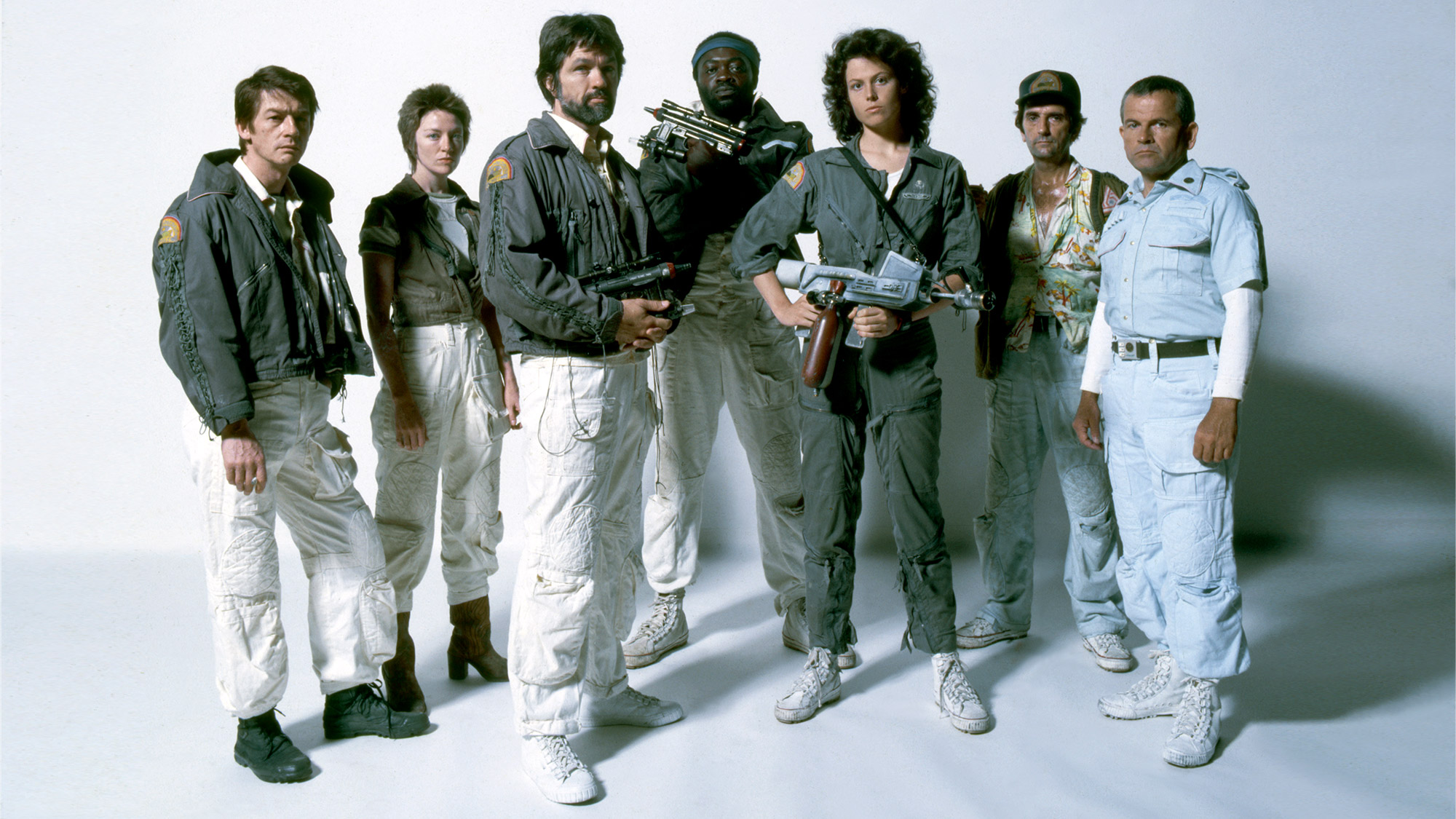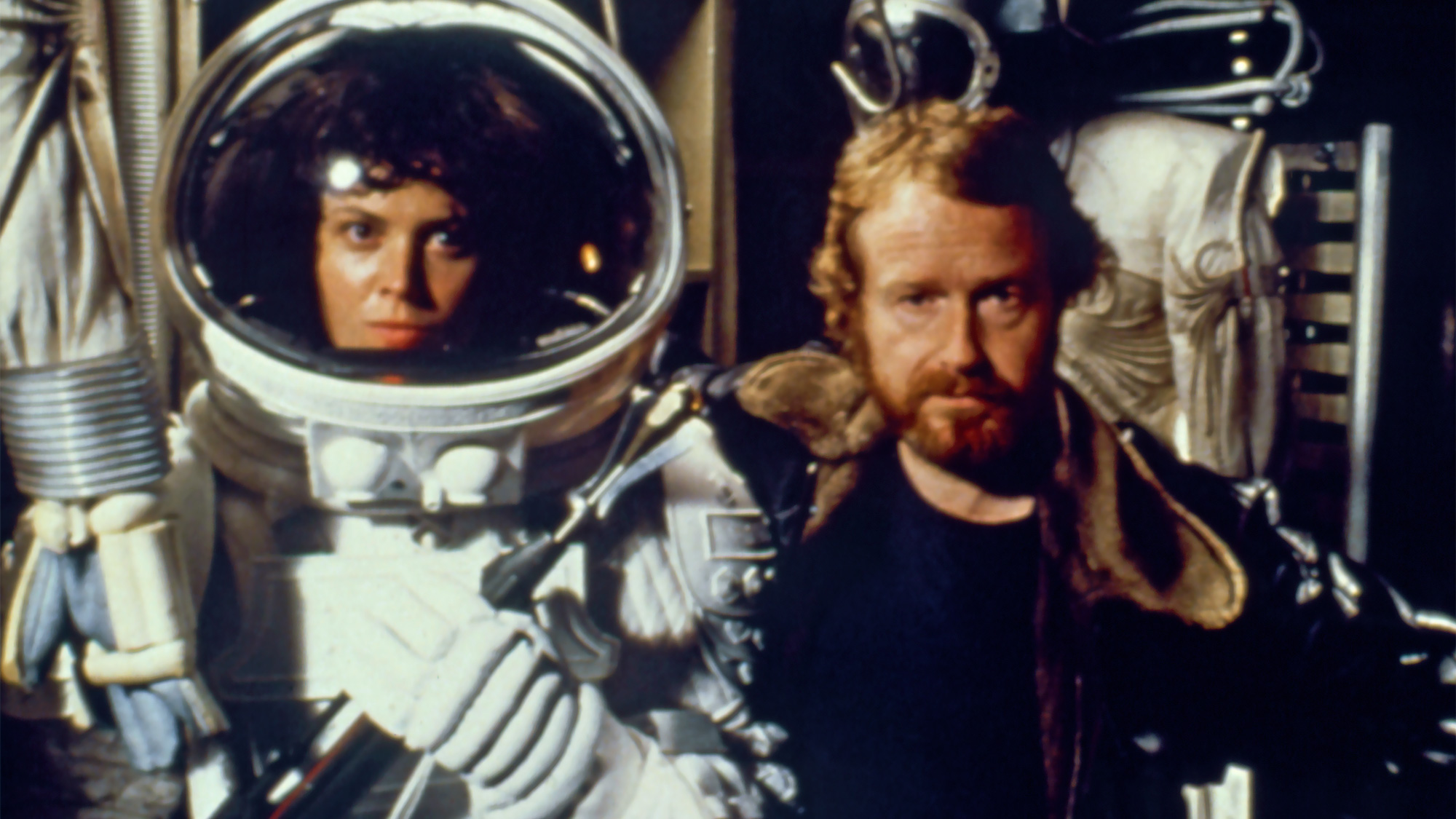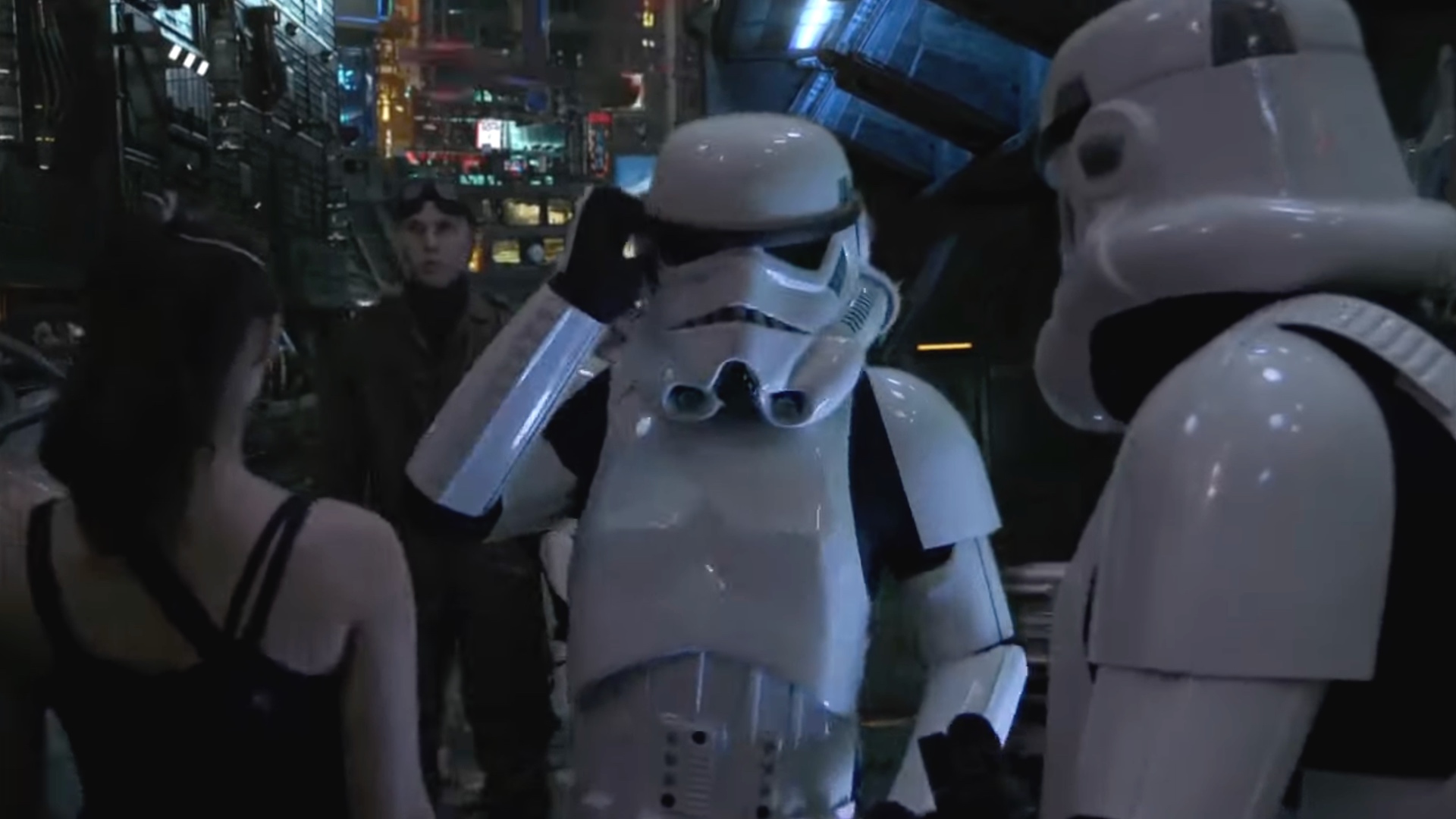The Allure of 'Alien': 40 Years Later, It's Still One of the Best Sci-Fi Movies Ever Made
Its artistic perfection is matched only by its storytelling.
Some spoilers ahead, but then, if you haven’t seen "Alien" already, you haven't lived.
The 1970s gave the world many weird and wonderful things; highlights include "The Six Million Dollar Man," flared trousers, Disney World and disco. On the other hand, low points include "The Six Million Dollar Man," flared trousers, Disney World and disco. However, the era's undeniable, indelible contribution to contemporary pop culture was in the genre of science fiction.
Prior to the '70s, science fiction had struggled to make an impact; although considered classics today, movies like "The Day the Earth Stood Still" (1951), "Forbidden Planet" (1956) and "2001: A Space Odyssey" (1968) weren't exactly box office behemoths. However, during this decade, the cinematic science fiction experience would effectively be rewritten.
A handful of creative offerings came along, like "Silent Running" (1972), "Dark Star" (1974), "Rollerball" (1975) and "Logan's Run" (1976), but everything changed in 1977 when "Star Wars: Episode IV – A New Hope" was released. The effect of this sent studios frantically scrambling for every script set in space, resulting in a never-before-seen sci-fi tsunami.
However, like a rebounding pinball, the still-mushrooming genre was suddenly sent in a completely new direction just two years later in 1979, when director Ridley Scott rewrote the rules of cinematic science fiction with "Alien."
Related: 'Alien' Horror: 9 Terrifying Xenomorphs from the 'Alien' Movies

"Alien": Still Horrifying at 40

"Alien": Still Horrifying at 40

"Alien": Still Horrifying at 40

"Alien": Still Horrifying at 40

"Alien": Still Horrifying at 40
Based on a story by Dan O'Bannon and Ronald Shusett, the film follows the crewmembers of the commercial space tug Nostromo, who encounter the eponymous Alien, a deadly and aggressive extraterrestrial running loose on the ship.
Breaking space news, the latest updates on rocket launches, skywatching events and more!
It was met with immediate critical acclaim and box office success, winning the Academy Award for Best Visual Effects; three Saturn Awards (Best Science Fiction Film, Best Director for Scott and Best Supporting Actress for Veronica Cartwright); and a Hugo Award for Best Dramatic Presentation, along with countless other nominations.
The basic premise itself wasn't entirely new; innocents on Earth and in space had been terrorized by a single, sinister alien many times before. And, according to movie mythos, the story was pitched early on as "Jaws" in space. However, a combination of innovative ideas, solid storytelling, creative cinematography and mind-blowing production design ensured that this movie would be like nothing else that had come before it.
"Oh, yeah, it's an iconic film! It changed the way horror, thrillers, science fiction — just all of those genres — depicted this sort of thing," said astrophysicist Phil Plait of Bad Astronomy on SyFy Wire. "There'd been other movies that had used space as the setting for a thriller, but this one was so gritty and dirty and real-feeling."
Related: 'Aliens' Reebok Stomper Sneakers Available Once Again on Alien Day
We spoke to Plait because, in addition to being a leading scientist in his field and a well-known space spokesperson on television, like us, he’s also a colossal science fiction fan.
Unlike other blockbuster sci-fi films of the '70s and '80s, there was very little need for green screen special effects – or blue screen, as it was back then. Most of "Alien" is set aboard the Nostromo, and the scenes that aren’t, are set on the derelict alien spacecraft, and briefly, on the planet’s surface. Consequently, like a theatre production, the environment was minimal. And when you factor in the ultrareal, retro-future set design, any distractions to the story were kept to a minimum.
"Alien" is like a painting: a beautiful piece of art that goes from beginning to end with a real eye toward what it is that scares us — with the hanging chains and the tight spaces and all — the mechanical, the machinery, industrial stuff everywhere. It was just an uncomfortable, beautifully done flick," Plait said.
"While the effects were good, there wasn't a lot of special effects in the movie. It's more of a set piece, where they're on a planet, they're in the alien ship and they're on the Nostromo, and that's really it."
Scott went to great lengths to not only achieve stunning set design, but also to create a real environment that was as close as possible to what he was trying to portray on film. The Nostromo was a self-contained set that you couldn't get out of except by walking all the way through it. And as a result, the actors felt trapped inside it, adding as much as possible to their performance. A similar premise was used by Duncan Jones and his film crew inside the "Moon" moonbase soundstage, and Joss Whedon built the “Serenity” as one complete set for "Firefly."
The breathtaking production design by conceptual artist Ron Cobb and painstaking attention to detail weren’t the only elements of "Alien" that added to an effective sense of realism.
The film stars Tom Skerritt, Sigourney Weaver, Cartwright, Harry Dean Stanton, John Hurt, Ian Holm and Yaphet Kotto, and together, they make up the crew of the Nostromo.
"You have a captain [Skerritt], he knows what he's doing, but he's not like a starship captain in 'Star Trek.' He's not this brave hero standing down the enemy. When he makes a decision, when he knows he has to go into the air ducts with the flamethrower, he's not happy about that decision," explained Plait.

"And with everybody else, they're confident, but this is a job for them. This isn't a calling. It's not the way they see themselves. It's not like, 'One day I woke up and said I am going to be the warrant officer on an ore refinery' — and so there's just a lot of that authenticity to it."
Like his devotion to the set design, Scott also went to great lengths to get the best performances from his cast. The most well-known instance was Kane's (Hurt's) infamous death.
In this scene, the crew is enjoying one last meal before returning to cryogenic hibernation following the troublesome incident on the planet that led to Kane having an unknown organism attach itself to his face. Unbeknownst to everyone, that organism has laid an embryo down his throat and during dinner, he starts convulsing before a particularly pesky alien fetus tears through his major organs and bursts out of his chest. Yuck.
For this "chestburster" sequence, Hurt stuck his head, shoulders and arms through a hole in the mess table, linking up with a mechanical torso that was packed with compressed air to create the forceful exit of the alien … plus lots of animal guts. Scott deliberately didn't tell the rest of the cast that real blood and guts were being used, to provoke genuine reactions of terror and disgust. It was filmed in one take with four cameras.
Apparently, this worked so well that Kotto went home in complete shock afterward, locking himself in a room and refusing to talk to his wife for several hours.
If “Star Wars” made science fiction mainstream, then "Alien" made science fiction scream.
"That was just overwhelming, I just loved it, I remember going out and buying as many fan magazines as I could, like Starlog that talked about how the special effects were made. And there were articles about it in the newspaper — I'd cut them out and keep them, and yeah, I was pretty blown away by it. I loved it!" Plait said.
It’s that alien, that gestated inside and emerged from Kane, that proves to be problematic for the crew of the Nostromo. A life-or-death struggle begins as they attempt to track it down and kill it with only improvised weapons at their disposal.
Scott set out to show as little as possible of the titular alien — designed by H.R. Giger — thus allowing our imaginations to do almost all of the work. The ongoing threat that this creature represents as it slowly kills off each member of the crew is a slow-building escalation of emotion, excitement and intensity as we learn that it’s rapidly growing much larger than the tiny, fist-size xenomorph we saw scurry across the ship’s mess following its "birth."
"The tension was overwhelming, and when the alien comes out of Kane's chest, that moment had been so beautifully sculpted, and I remember in the theater people were screaming and screaming when that happened. You don't get that anymore in movies," Plait said, with the tiniest hint of disappointment in his voice.
Frankly, "Alien" should be on the national curriculum. In 2002, it was deemed "culturally, historically or aesthetically significant" by the Library of Congress and was selected for preservation in the United States National Film Registry. In 2008, it was ranked by the American Film Institute as the seventh-best film in the science fiction genre.
If, for some inexplicable reason, you haven't seen it, then we suggest you owe it to yourself to set aside 2 hours, find the biggest TV imaginable, switch off your phone, close the window blinds, switch off all the lights, sit back and enjoy this film in a setting that's the closest you can possibly get to a full cinematic experience — just as this movie was meant to be seen.
"Nothing had been done like this before. Now there are a million movies like 'Alien' and the original is diluted because of that. So I think when a movie comes along and somebody says, 'This is a game changer, this is going to be amazing,' that's when I say, yeah, I'm going to go see that in a theater," said Plait.
- The Scariest Aliens Ever from Sci-Fi Films
- 'Alien' Looks Glorious on Stage in This New Jersey High School Play
- Biggest Space Movies to Watch in 2019
Follow Scott Snowden on Twitter. Follow us on Twitter @Spacedotcom and on Facebook.
Join our Space Forums to keep talking space on the latest missions, night sky and more! And if you have a news tip, correction or comment, let us know at: community@space.com.
When Scott's application to the NASA astronaut training program was turned down, he was naturally upset...as any 6-year-old boy would be. He chose instead to write as much as he possibly could about science, technology and space exploration. He graduated from The University of Coventry and received his training on Fleet Street in London. He still hopes to be the first journalist in space.

